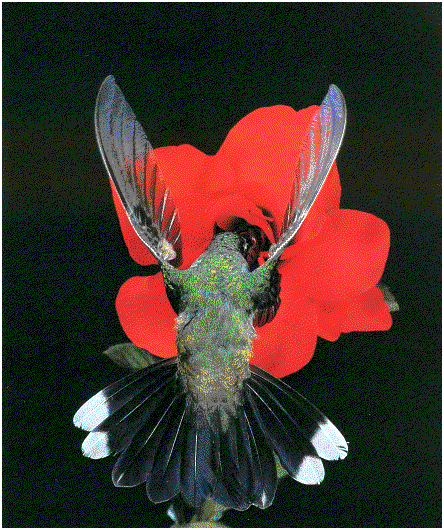Daughter
Luis Alberto Urrea
(Little Brown)

And so it happens. The foundling bastard gets discovered by Tomás, her putative father, and starts going out on cure-trips with Huila. A singular warmth flows from Teresa's hands. She is able to stop pain with a mere wave of her palms. She also has a relationship with the chuparosas. If she is out in the desert and gets het up, hummingbirds come and beat their little wings in her face and cool her off.
I almost stopped there, with the hummingbirds, around page 188, but you know what happens when you've invested three days in a third of a novel? It's like investing in a stupid stock that goes down the moment you buy it. You think --- "It can't go down any further." And even though it does, you stick with it, hoping for a miracle.
And, it turns out, miracles begin to pop up in The Hummingbird's Daughter. Not miracles of writing style, but the other kind.
Teresa appears to have it. She can make the sick well, the blind to see, the lame to walk, the dying to come back to life.
Some call her a witch, some call her god, but they do fill the front yard, pissing off the cacique. The pilgrims eat his chickens, tear down his fences, and make general nuisances of themselves, as pilgrims will.
They think she is god, but Teresa replies, as all good saints should, that she isn't god, that she's just doing right by doing good by his work.
Urrea is not a bad storyteller, as such: even manages to avoid the clichés that abound in the genre of cowboys and witches. He weaves in believable tales of the casual murder of the Yaqui indians by the rurales during the dictatorship of Porfirio Diaz --- the story is set in Sonora in the late part of the 19th Century. Most of all, Teresa and the reader learn that it's no picnic when the pilgrims come to town expecting you to cure their wens, running sores, and death. They may award you sainthood, but usually it turns out to be a kick in the pants.
There are times when one gets impatient with Urrea's writing: the mechanics of el jefe's love-making ("he climbed atop her ... did his duty") or the two or three word paragraphs running down the pages like busy ants that well could have been squirted with Ortho:
- "Girl?" she said.
"Aquí estoy," Teresa whispered.
"Do you want my shotgun?"
"No."
"Do you want my tobacco pouch?"
"No, thank you."
"You know where my herbs are."
"Yes."
"Use them."
"I will."
Huila sighed, long and dry.
There is also a superabundance of giggles sprinkled here and there, supposedly to mitigate some of the woe, such as being forced to sleep with the piggies all night. In all, we stuck it out to see how Teresa will get out of the jam of trying to be the Joan of Arc of Northern Mexico.
How does she do it? She just gets on a train with Tomas, tells the rebels to hold their fire, and goes where all the good witches go --- to the U.S. Presumably to start a Internet Café. Called "The Magic Hummingbird."